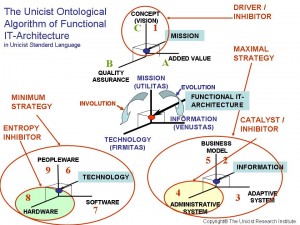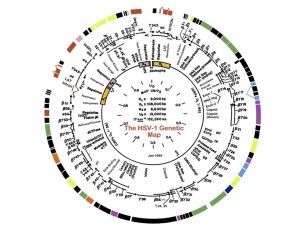The unicist ontology of an institution is essentially analogous to the DNA of a living being. They both define the nature of the being, have an implicit purpose and materialize the action and the energy conservation principles.
Being aware of the unicist ontological structure that underlies and rules the behavior and evolution of an institution it is possible to define the taxonomies and action plans to ensure the functionality of an organization respecting its nature .
The difference between the DNA of different species is minimal although the physical difference might be enormous.
The same characteristic is given at the unicist ontological structure of institutions. Subtle differences generate different species.
That is why the accuracy of diagnoses of the conceptual structure of an institution is determinant. It defines its species and the possibilities and probabilities of its evolution.
Unicist algorithms for the genetic engineering of institutions
The functionality of algorithms is to provide a logical structure to understand and influence reality in a secure way. Following ontological algorithms an individual is respecting the rules of ontogenesis.
Algorithms describe and explain the natural functionality of a reality and establi sh the relationships of the objects that are part of such reality based on the ontogenesis of the evolution process.
sh the relationships of the objects that are part of such reality based on the ontogenesis of the evolution process.
They provide the natural way to influence institutions. Using unicist ontologies to influence institutions implies dealing with the genetic engineering of the institution.
Therefore, the use of unicist technologies in institutions is based on “change without changing”. That means introducing changes that respect their nature and do not try to change their essential concepts.
NOTE: The Unicist Research Institute was the pioneer in complexity science research and became the major research organization in the world in the field of human adaptive systems. More than 4,000 unicist ontological researches were developed since 1976 until July 2011 in the field of individual, institutional and social evolution. They included the development of the unicist ontogenetic maps (DNA) of institutions.

